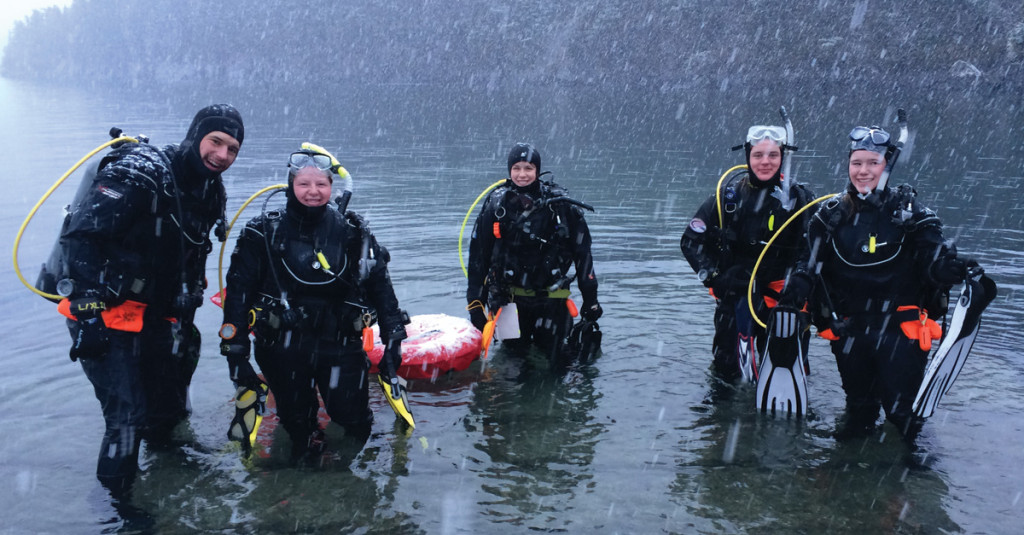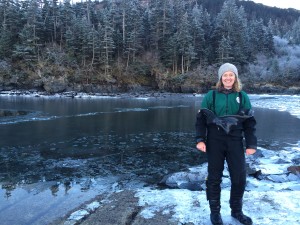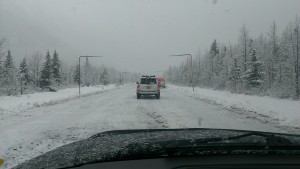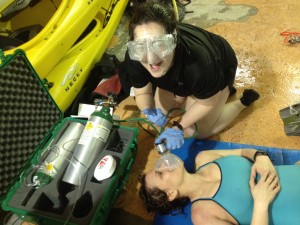

“Did you know there are all kinds of treasures under the Valdez ferry dock, including discarded toilet seats and lawn chairs?” she says. “You can imagine the fun a bunch of college students had pretending to be lounging on the beach at the sea floor.”
Along with docks and gravel pits, Brown’s diving career has taken her all over Alaska, including Glacier Bay, Adak, Dutch Harbor, Katchemak Bay and the Bering Sea. For the time being, however, she has been diving mostly in Whittier and in the pools at the Moseley Sports Center and UAA with her students.

For Brown, who did her PhD and post-doctoral research on bethnic boundary layer dynamics driven by waves within marine kelp beds and sea grass canopies offshore Perth, Australia, she hopes to inspire students to become young scientists. So far, they’ve been working on diving first aid and rescue skills through Divers Alert Network (DAN).
“It has been a rewarding experience watching students discover new abilities, gain confidence and improve their watermanship skills. I am really looking forward to taking my class of scientific divers to the Kasitsna Bay Laboratory in May. We’ll spend a week in the lab learning the methods of underwater research, such as navigation, transects, quadrats, record-keeping and underwater video.”

“After taking my scientific dive class, students can go on to do dive-based research projects at APU or participate in dive activities at other organizations affiliated with (AAUS) such as aquariums and universities across the US and overseas. It has been a great experience for me to see the students overcome fears and become scuba divers. They get so excited about things I take for granted. I’ve been diving for so long that I forget that it’s not normal to breathe underwater! I am really enthusiastic about developing opportunities for my students to get out into remote Alaska to gain some of the amazing experiences like those I’ve had.”
In addition to teaching scientific diving courses, Eloise Brown teaches recreational diving and math at APU. Recently, she had the opportunity to be a guest on “Outdoor Explorer,” where she joined Scott Anderson, a retired rescue diver and the owner of DiveAlaska, and Emily Craver, the owner of Last Frontier Diving and Adventures in talking with KSKA’s Charles Wohlforth about diving in Alaska.
